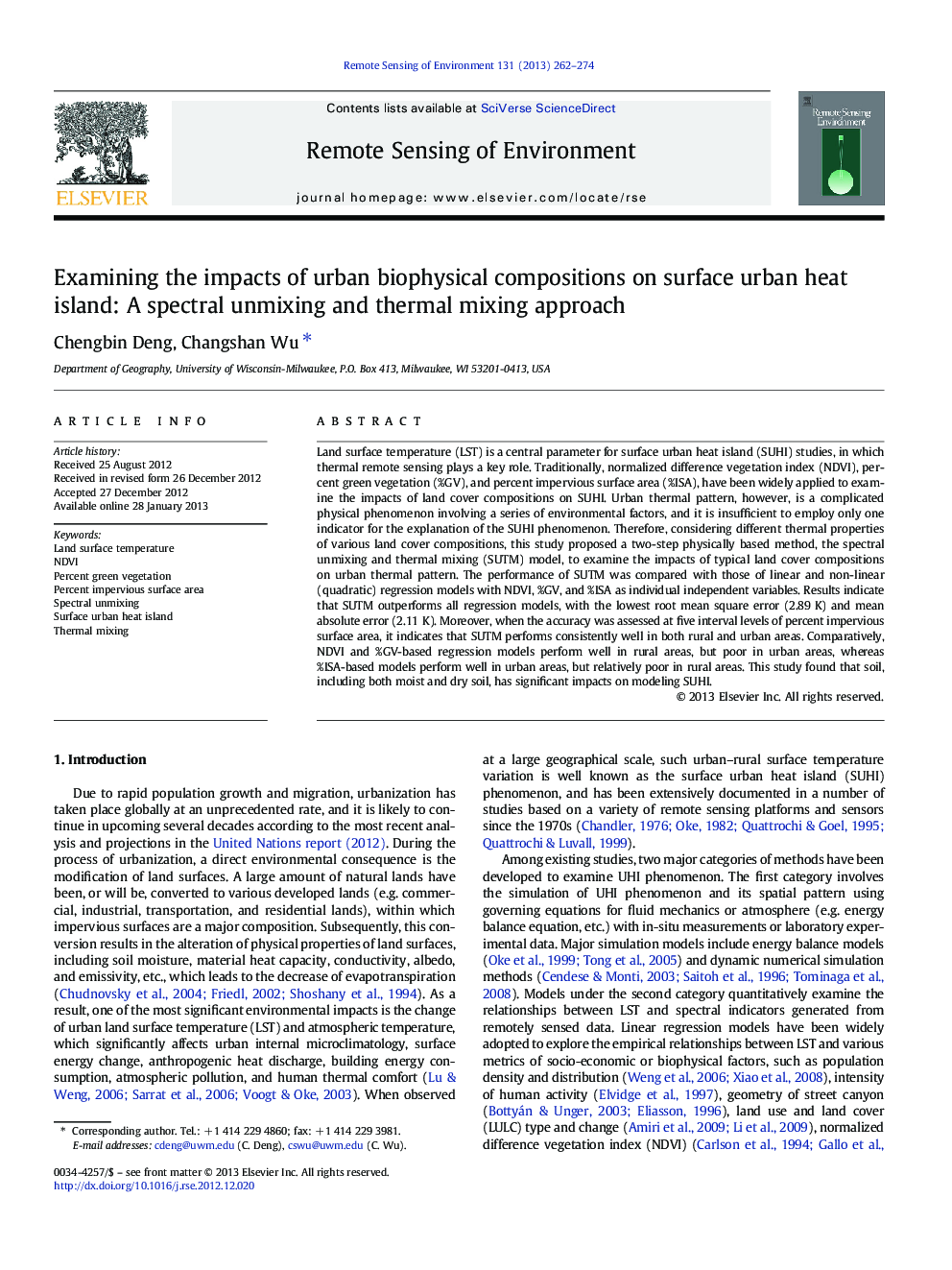| Article ID | Journal | Published Year | Pages | File Type |
|---|---|---|---|---|
| 6347246 | Remote Sensing of Environment | 2013 | 13 Pages |
Land surface temperature (LST) is a central parameter for surface urban heat island (SUHI) studies, in which thermal remote sensing plays a key role. Traditionally, normalized difference vegetation index (NDVI), percent green vegetation (%GV), and percent impervious surface area (%ISA), have been widely applied to examine the impacts of land cover compositions on SUHI. Urban thermal pattern, however, is a complicated physical phenomenon involving a series of environmental factors, and it is insufficient to employ only one indicator for the explanation of the SUHI phenomenon. Therefore, considering different thermal properties of various land cover compositions, this study proposed a two-step physically based method, the spectral unmixing and thermal mixing (SUTM) model, to examine the impacts of typical land cover compositions on urban thermal pattern. The performance of SUTM was compared with those of linear and non-linear (quadratic) regression models with NDVI, %GV, and %ISA as individual independent variables. Results indicate that SUTM outperforms all regression models, with the lowest root mean square error (2.89Â K) and mean absolute error (2.11Â K). Moreover, when the accuracy was assessed at five interval levels of percent impervious surface area, it indicates that SUTM performs consistently well in both rural and urban areas. Comparatively, NDVI and %GV-based regression models perform well in rural areas, but poor in urban areas, whereas %ISA-based models perform well in urban areas, but relatively poor in rural areas. This study found that soil, including both moist and dry soil, has significant impacts on modeling SUHI.
⺠We model surface urban heat island by a spectral unmixing and thermal mixing method. ⺠Abundance and thermal properties of various land compositions are considered. ⺠Results are compared with regression models using NDVI and land cover abundances. ⺠This method outperforms regression models with NDVI and land cover abundances. ⺠Moist and dry soil have significant impacts on modeling surface urban heat island.
